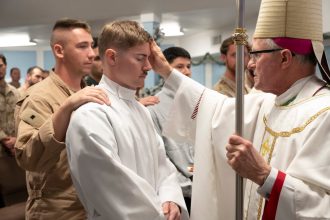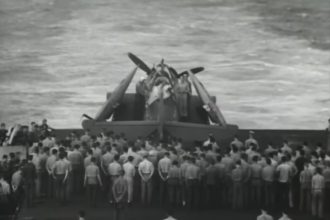It could be argued that the late General Omar Nelson Bradley deserved more than to have the M2 infantry fighting vehicle (IFV) bear his name. Though it performed well in the 1991 Gulf War, where it was even credited with destroying more Iraqi tanks than the M1 Abrams main battle tank (MBT), it has also been described as being akin to a camel, better known as a horse designed by committee.
It is even odd that the vehicle originally meant to replace the U.S. military’s M113 armored personnel carrier would be named for a general. But that is just part of the story.
Tanks Are Named for Generals
Omar Bradley served as a senior officer in the U.S. Army during the Second World War and was later the first chairman of the Joint Chiefs of Staff. No epic cinematic biography has been made about Bradley, but he was a supporting character in The Longest Day and had a more substantial presence in the 1970 film Patton. In that film, he is portrayed as a highly competent and reliable leader, whose personality was more subdued and less attention-seeking than that of General George S. Patton.
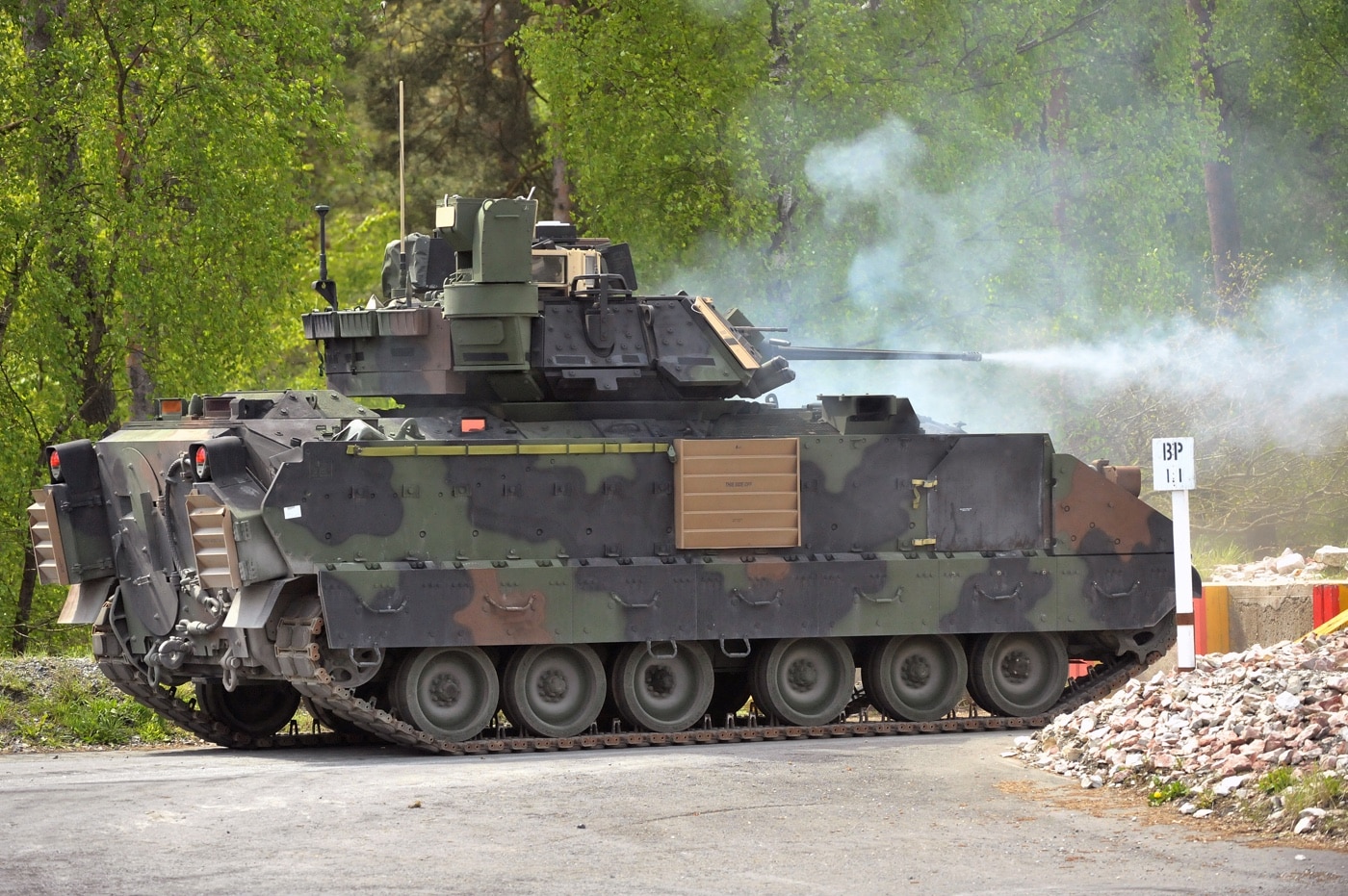
That fact could explain in part why the U.S. military sought to honor the general when it fielded the M2. However, it could also simply be that Bradley had died in April 1981 and, when the vehicle entered service later that year, there was some interest in drawing attention away from the controversy around it.
As originally conceived, there were no plans to name the vehicle for anyone.
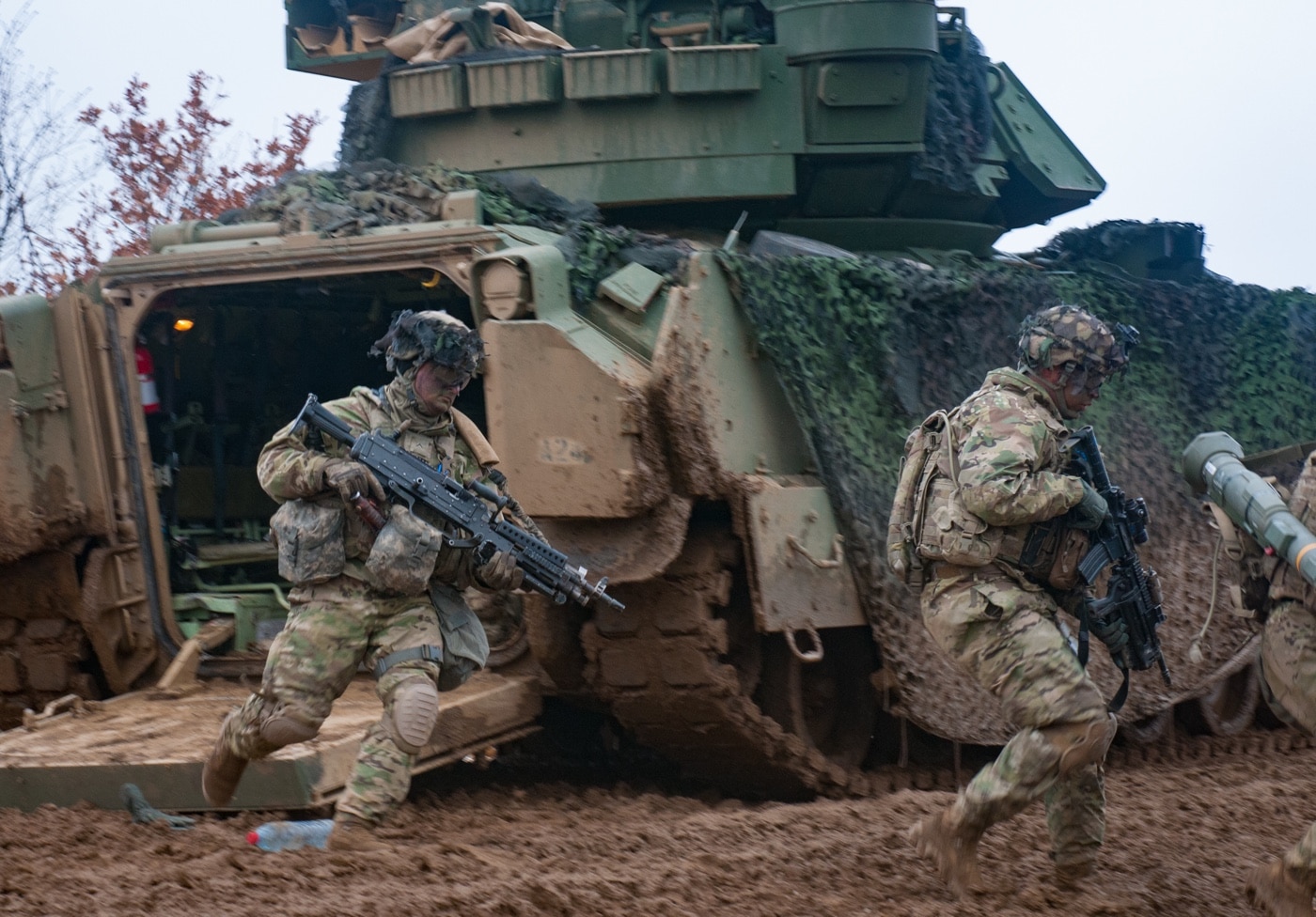
Most U.S. military tanks have been named for generals, with leaders chosen to evoke a sense of legacy and to help inspire the tank crews. That point is further notable because APCs typically didn’t have names. Yet, the M2 Bradley wasn’t meant to be an APC, it was meant to be an IFV, a platform that also didn’t really exist in U.S. arsenals at the time.
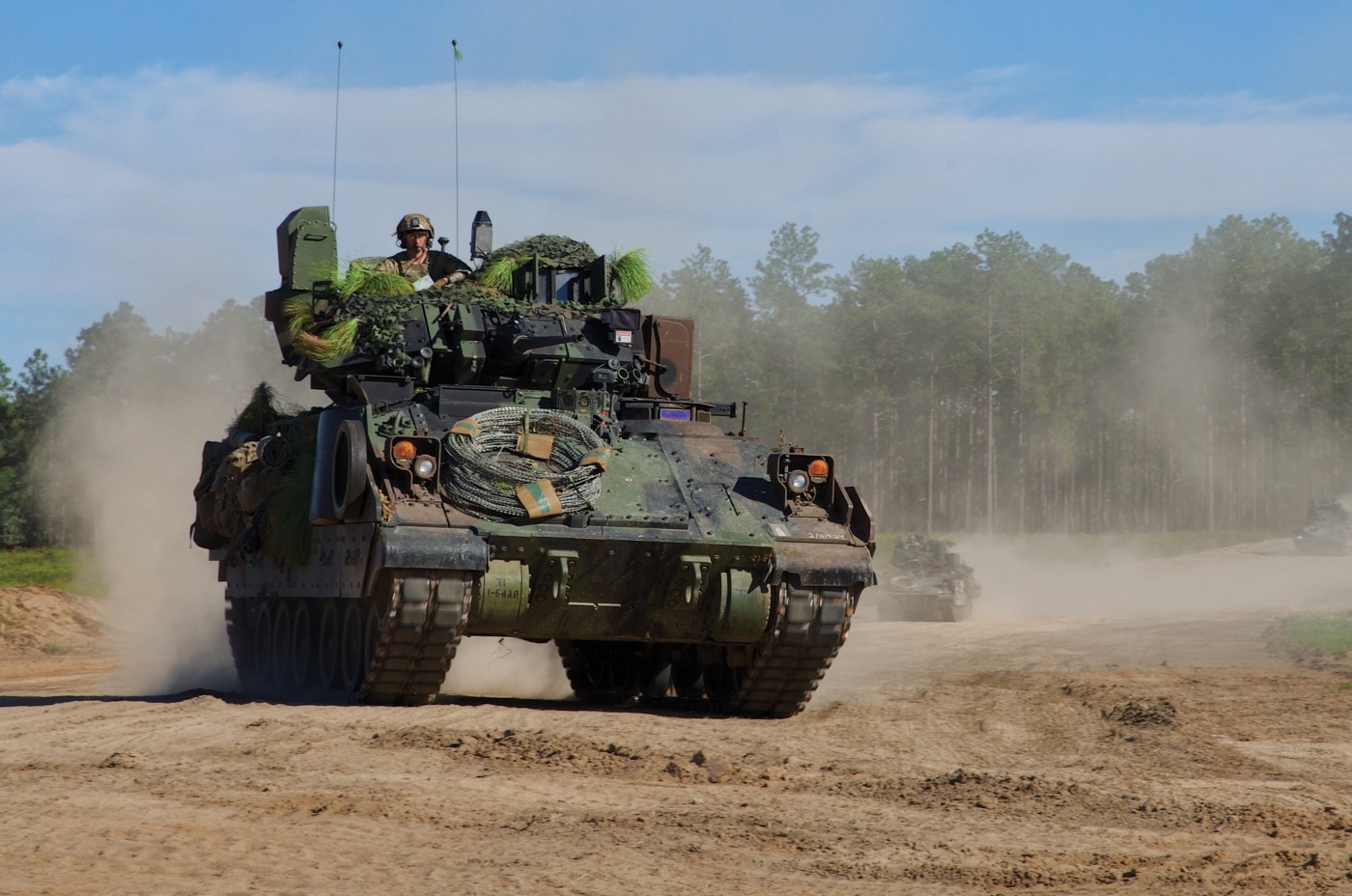
How this came to be is explained in the satirical HBO made-for-TV movie The Pentagon Wars, based on the book The Pentagon Wars: Reformers Challenge the Old Guard, written by Colonel James G. Burton, USAF (Retired). He was the officer who was appointed by Congress to observe the field development tests. Thus, while Omar Bradley was never the subject of a biographical film, the vehicle bearing his name did get some small screen attention!
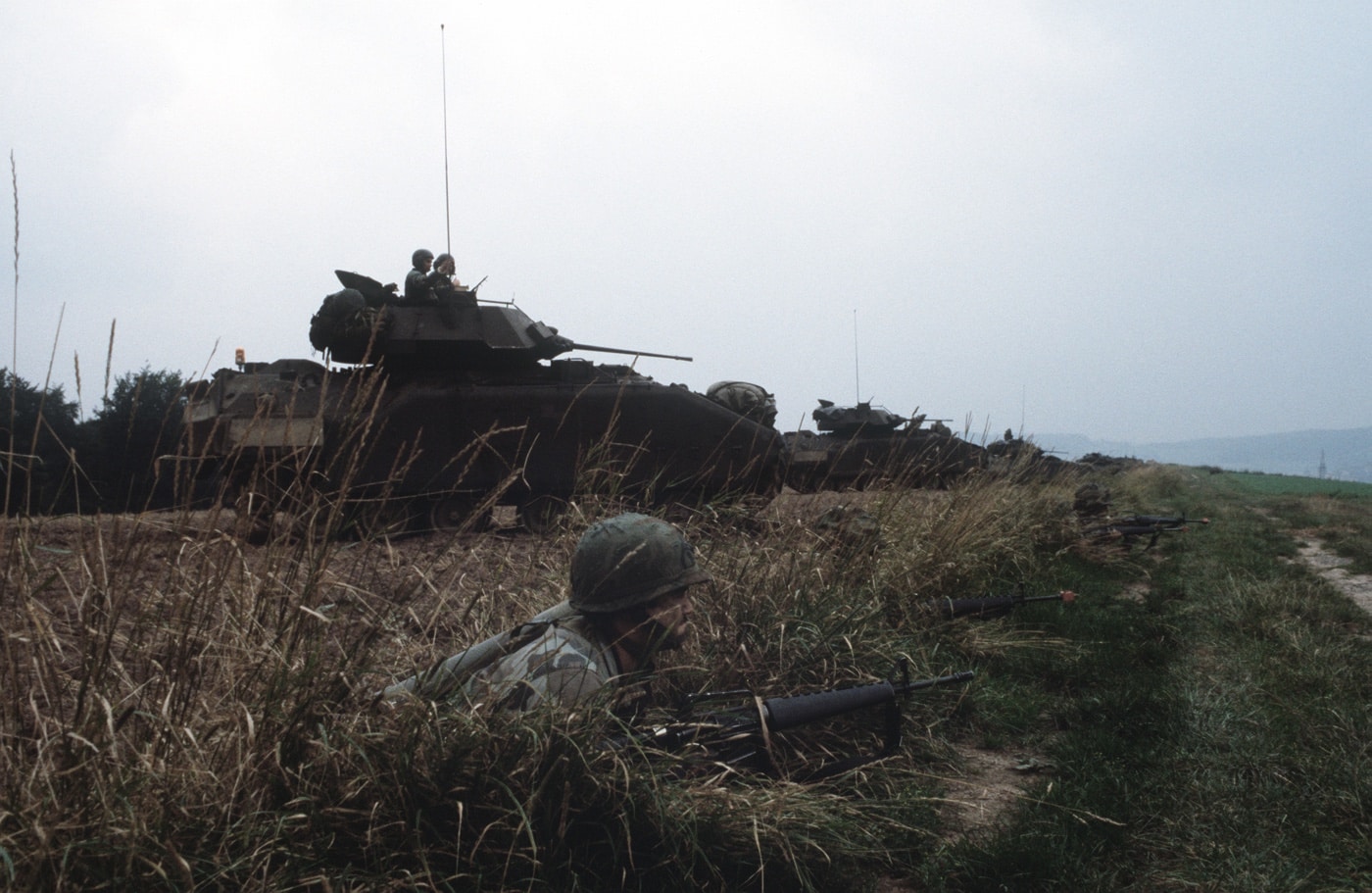
As noted in Burton’s book, the program faced a protracted development history that lasted nearly 17 years, during which time many U.S. Army officials were opposed to it. It was arguably a vehicle born out of compromise and committee that sought to serve in too many roles.
The M2 and the Pentagon Wars
Development of what was to become the M2 Bradley began in the late 1960s, based on lessons learned from Vietnam and also in response to the introduction of the Soviet Army’s BMP-1 IFV.
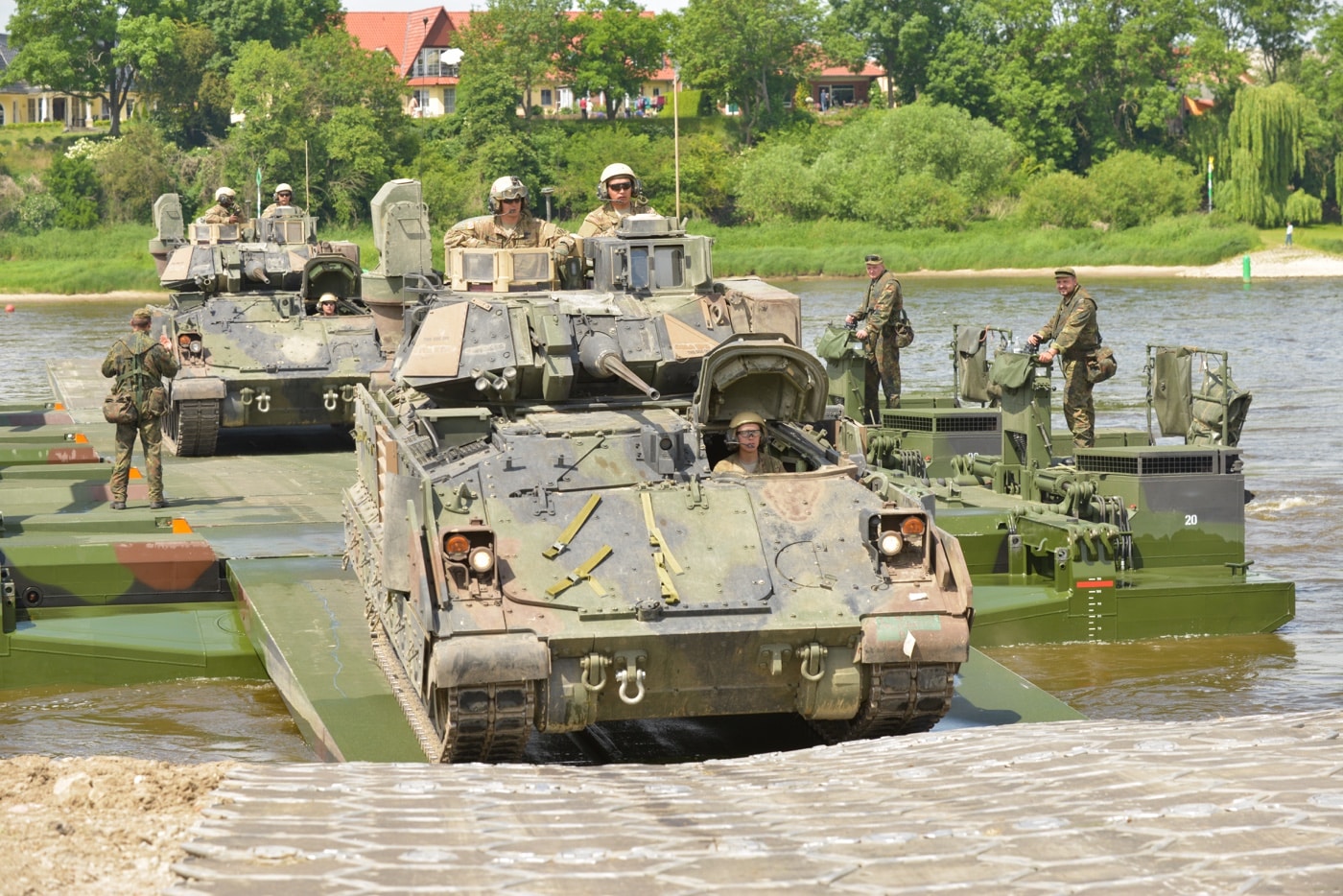
The original program called for creating a troop carrier that was fast-moving, and lightly armed and armored. Development continued, and the FMC Corporation produced three variants based on competing needs at the time. As originally conceived, the vehicle was to carry 11 soldiers to the frontline. However, the cancellation of the U.S. Army’s XM800 Armored Reconnaissance Scout Vehicle led to the decision to merge the platforms, resulting in the XM2 IVF version and a separate XM3 cavalry fighting vehicle (CFV). The former could carry six to seven soldiers, while the latter variant was meant to serve primarily in a reconnaissance role. The M2 was a compromise that ensured that it was essentially a jack-of-all-trades and master of none of the roles for which it was designed.
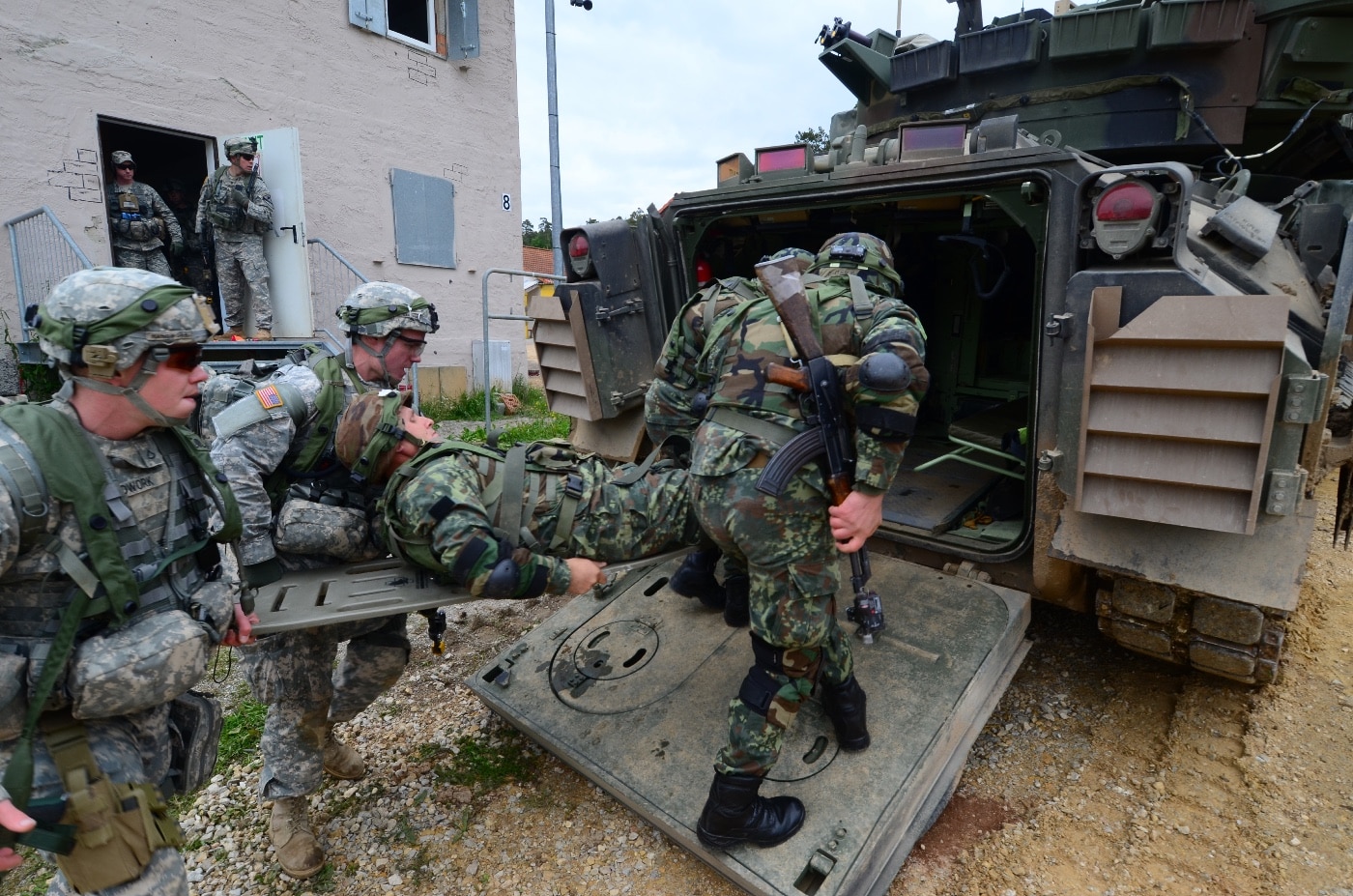
A University of Maryland study into the M2 Bradley noted that while the vehicle did perform well in the Gulf War, it wasn’t due to the result of efficient planning or project management. The opposite was very much true. The M2 Bradley had too many stakeholders overseeing its development, resulting in inflexible and even questionable requirements, while there was a failure to make design tradeoffs for fear of losing its key capabilities.
“The Bradley has been described at different times, by military officers and historians, as a weapon that means ‘all things to all people,’ a ‘quintessential hybrid,’ and ‘a proverbial camel…that does nothing well.’”
Bradley Key Facts
The first production M2 Bradley IFVs were completed in 1981, with production continuing until 1995, with about 6,800 being produced in total. Though it could be mistaken for a tank with its large turret — a feature added to provide the scout capabilities — its main armament was a 25mm Bushmaster chain gun. As that wasn’t seen as effective in countering enemy armor, a twin TOW missile launcher was mounted to the side of the turret. The sighting for the main gun and TOW missiles was fully integrated to aid the gunner.
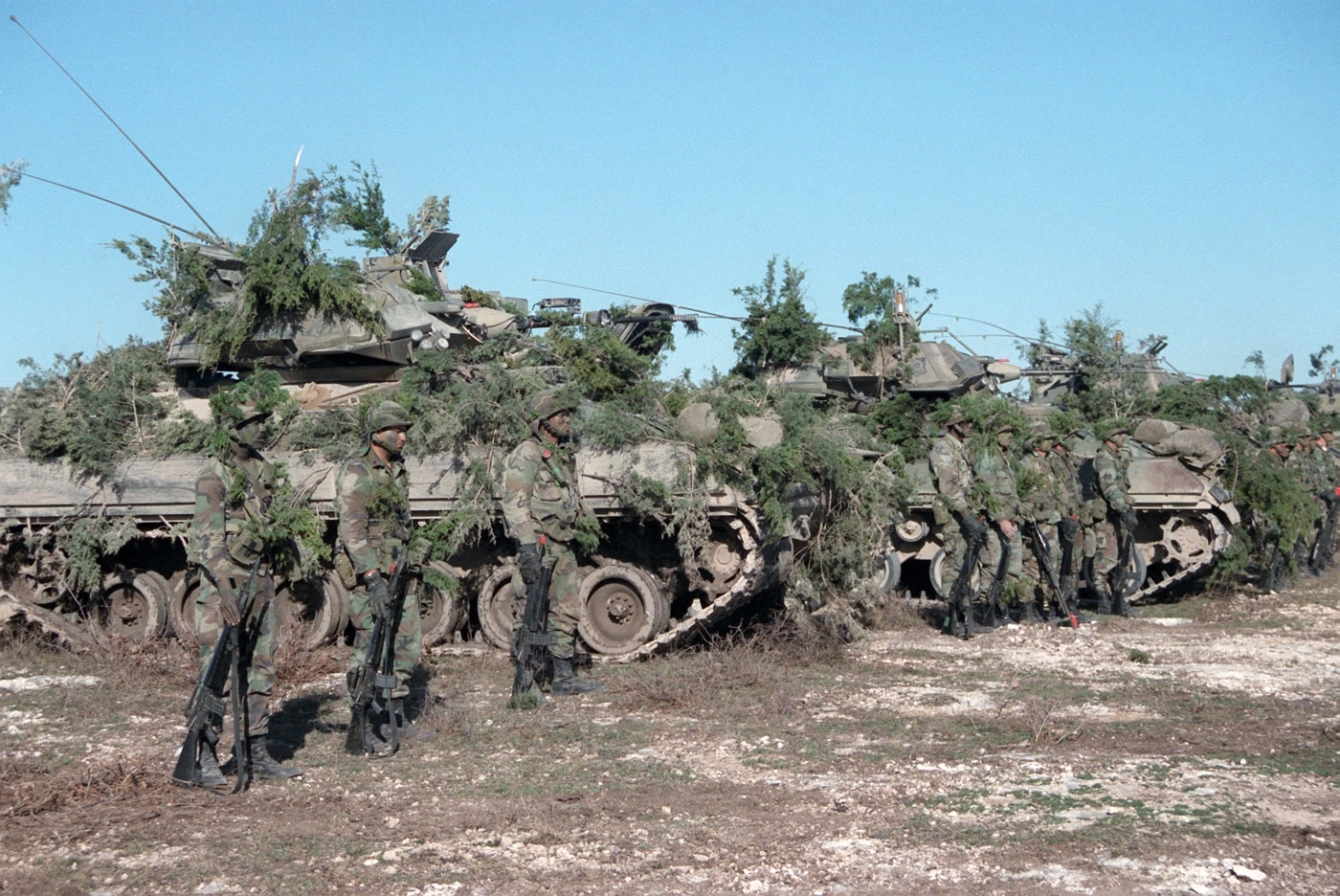
Powered by a Cummins VTA-903T turbo-charged eight-cylinder diesel engine, the M2 Bradley could reach a top speed of 40 mph, while it had a range of 300 miles.
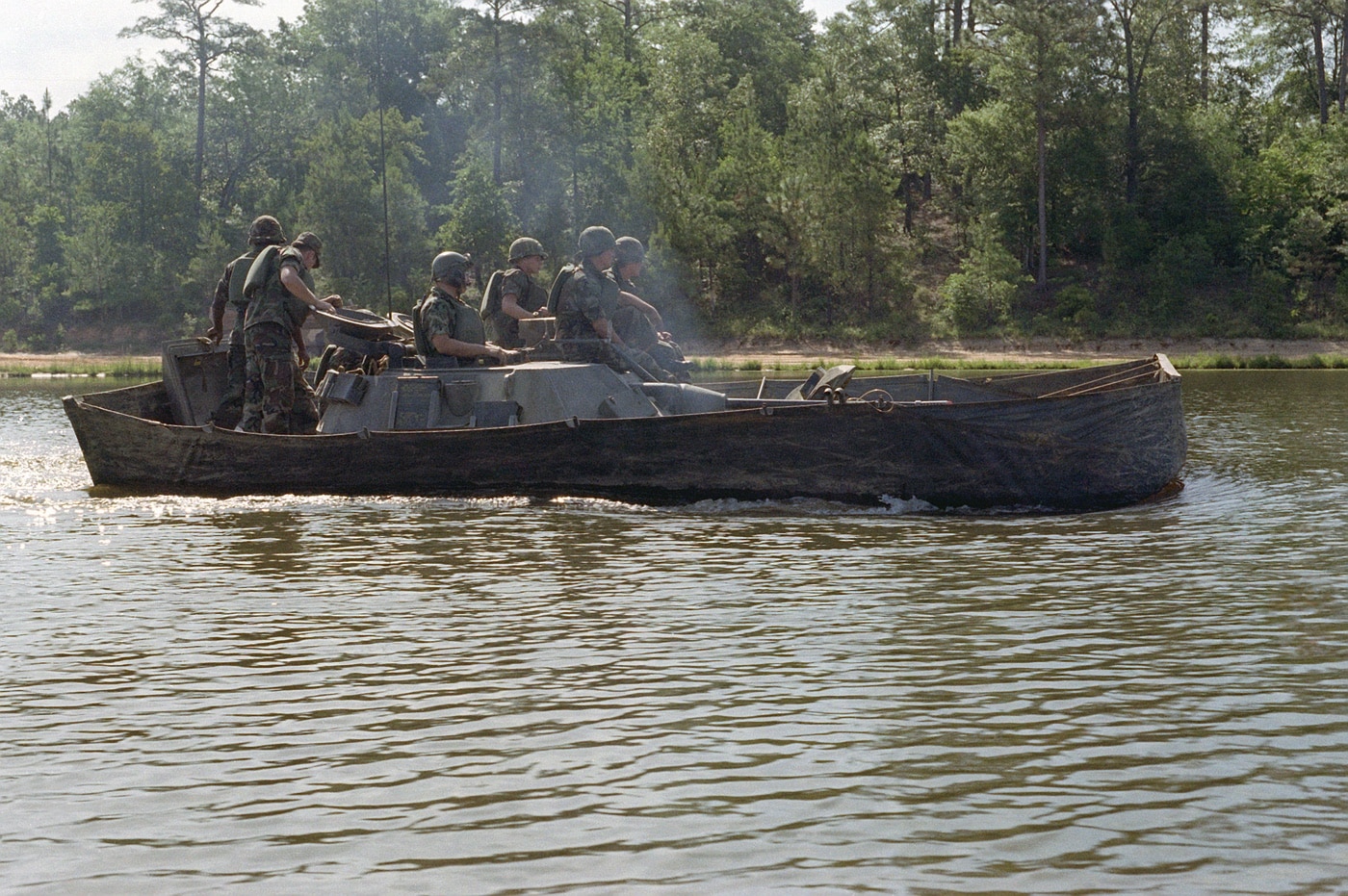
A lesser-known feature of the Bradley is that it is amphibious, being able to traverse water with an attached inflatable barrier but, as it takes up to 30 minutes for deployment, it’s seldom used.
The Bradley in War — Better Than Expected
Thanks to Col. Burton’s push for realistic testing, and his later testimony to Congress on the results, improvements were made to the vehicle’s suspension, armor, and most notably munition storage. That resulted in additional compromises.
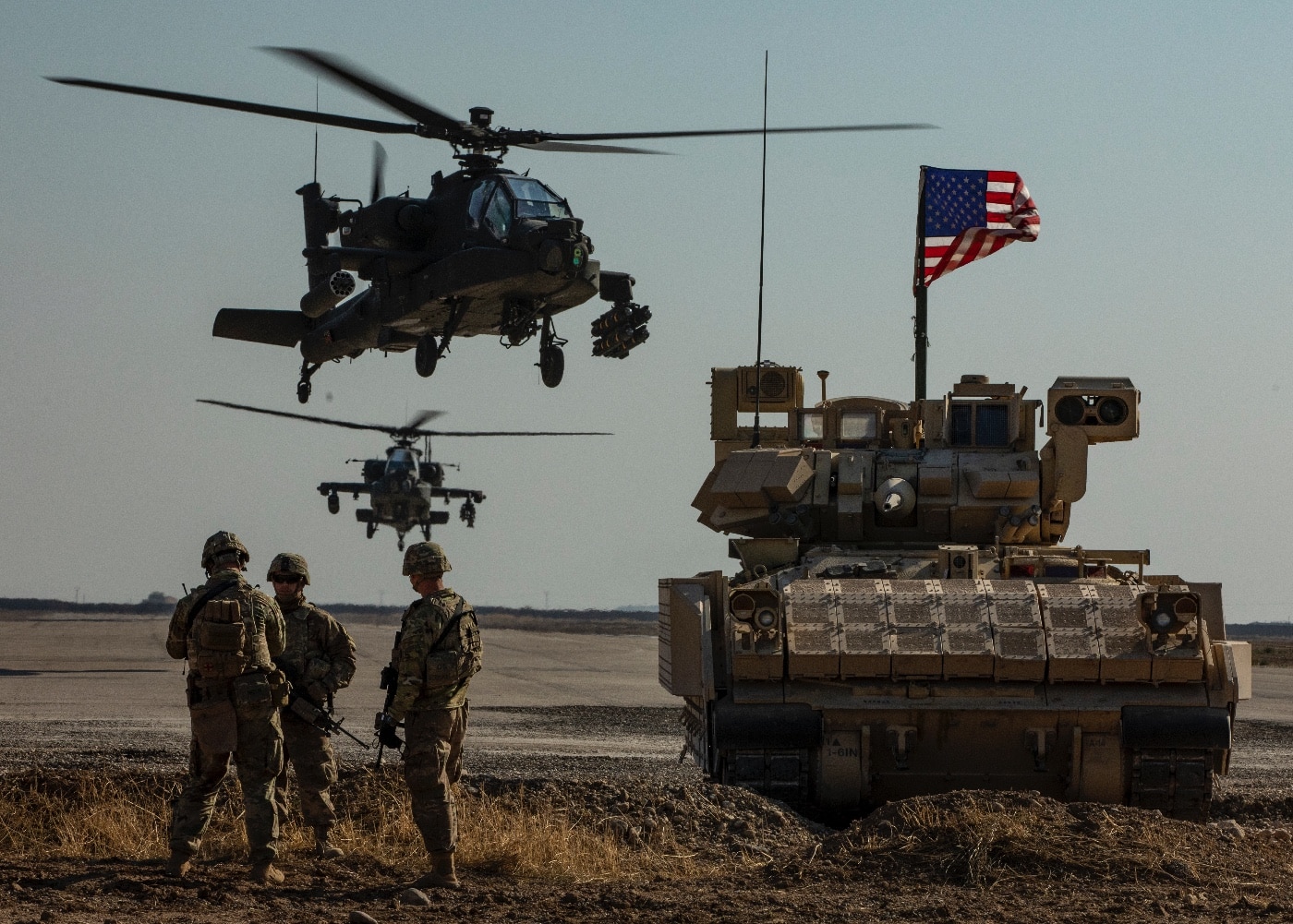
“The version that went into combat was 13 tons heavier than originally specified, carried less people, and retained features that called for variable missions and new forms of training,” the University of Maryland study added.
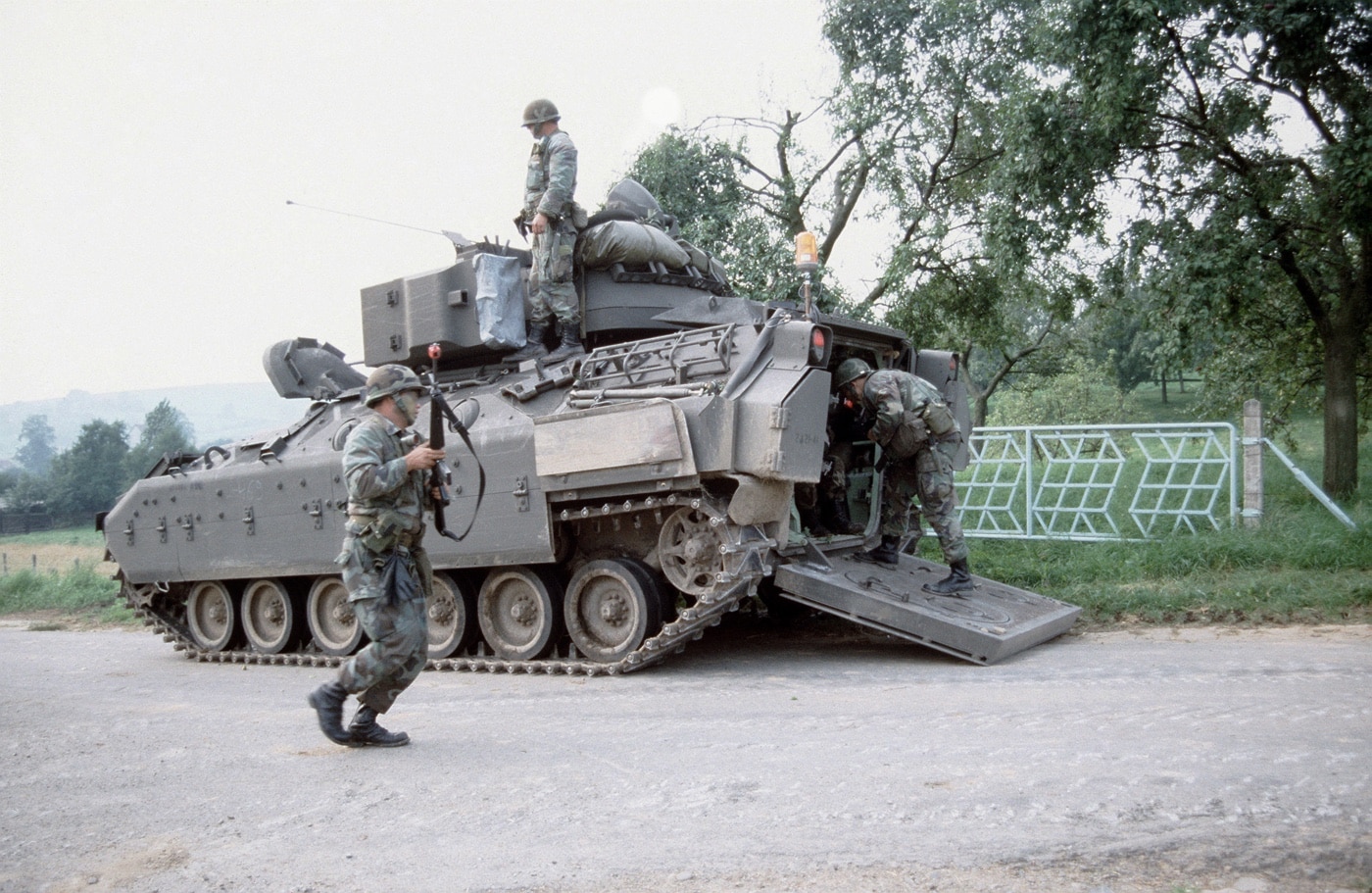
However, the changes likely saved lives and made the platform ideally suited for its baptism of fire that occurred during the Gulf War in 1991, where it proved to be highly effective. As previously noted, it destroyed more Iraqi armored vehicles than the M1 Abrams. Its TOW missile system was able to destroy the Iraqi military’s slower moving T-72 tanks, even though the primary focus of the Bradley was not “tank-to-tank” engagement.

The platform’s success in combat could certainly be credited to the highly trained crews, as well as the lackluster performance of the Iraqi military. However, 20 M2 Bradley IFVs were destroyed, with 17 believed to be the result of “friendly fire” incidents. As a result, further improvements were made with the introduction of better situational awareness technologies and eye-safe laser rangefinder capabilities.
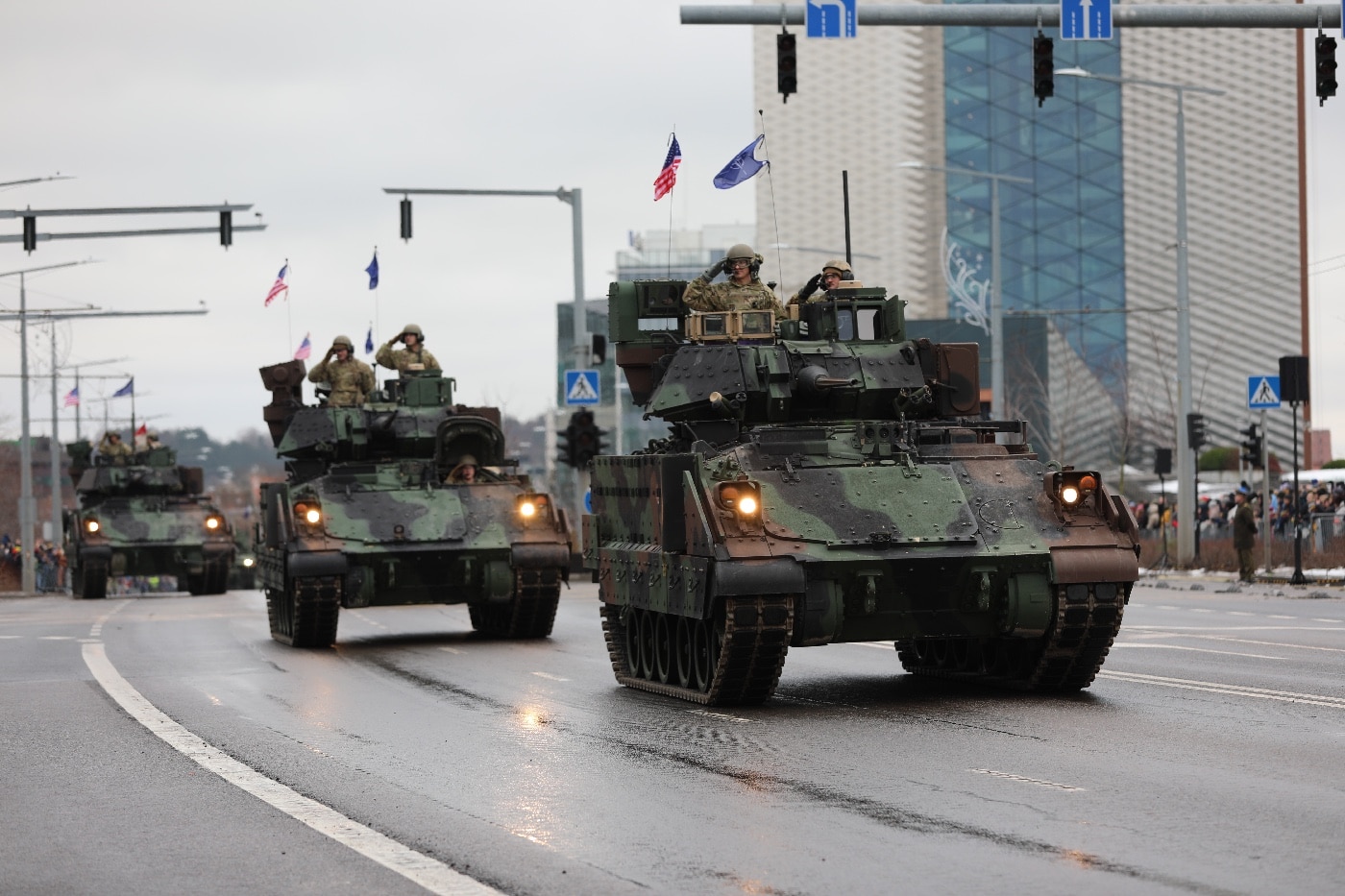
The Bradley was also deployed again in the wars in Afghanistan and Iraq, where it initially performed above expectations, but later it proved vulnerable to improvised explosive devices (IEDs). That necessitated even more upgrades that included greater armor protection, improved targeting systems and more advanced communication equipment. Those upgrades also led to more compromises, notably an increase in weight, which also impacted the speed and maneuverability. One feature that was reportedly welcomed by the crew was improved air conditioning units!
Who Really Respects the Bradley?
Around 300 Bradley IFVs have been supplied to Ukraine, enough to field six battalions, and the vehicle has proven highly effective against Russian tanks and other armored vehicles. Kyiv’s forces have praised its maneuverability and firepower (notably from the TOW rockets), and it has certainly earned the respect from the Russian forces it has engaged.
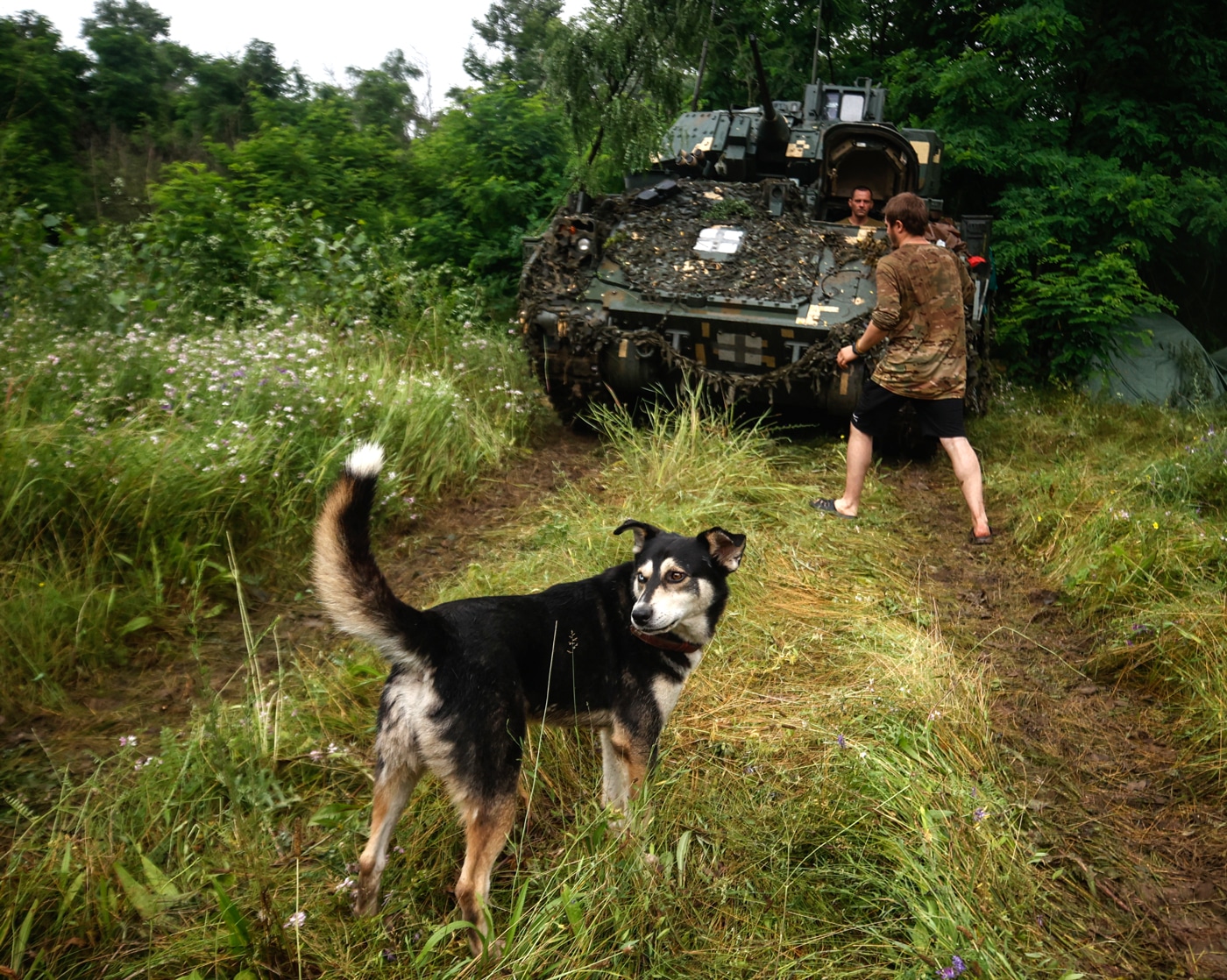
There have also been reports that Russian engineers have studied captured M2s to determine how to copy some of the vehicle’s best features. At least one M2 was even pressed into service by a unit of the Russian Army’s 30th Motor Rifle Brigade last year after it was captured in the Donbas region.
Yet, as The National Security Journal also reported, “lessons in Ukraine have demonstrated that warfare has evolved in ways that the Bradley simply wasn’t designed for. While it has compared relatively well to other armored vehicles, its light armor and lack of defenses against drones have presented many challenges for its Ukrainian operators.”
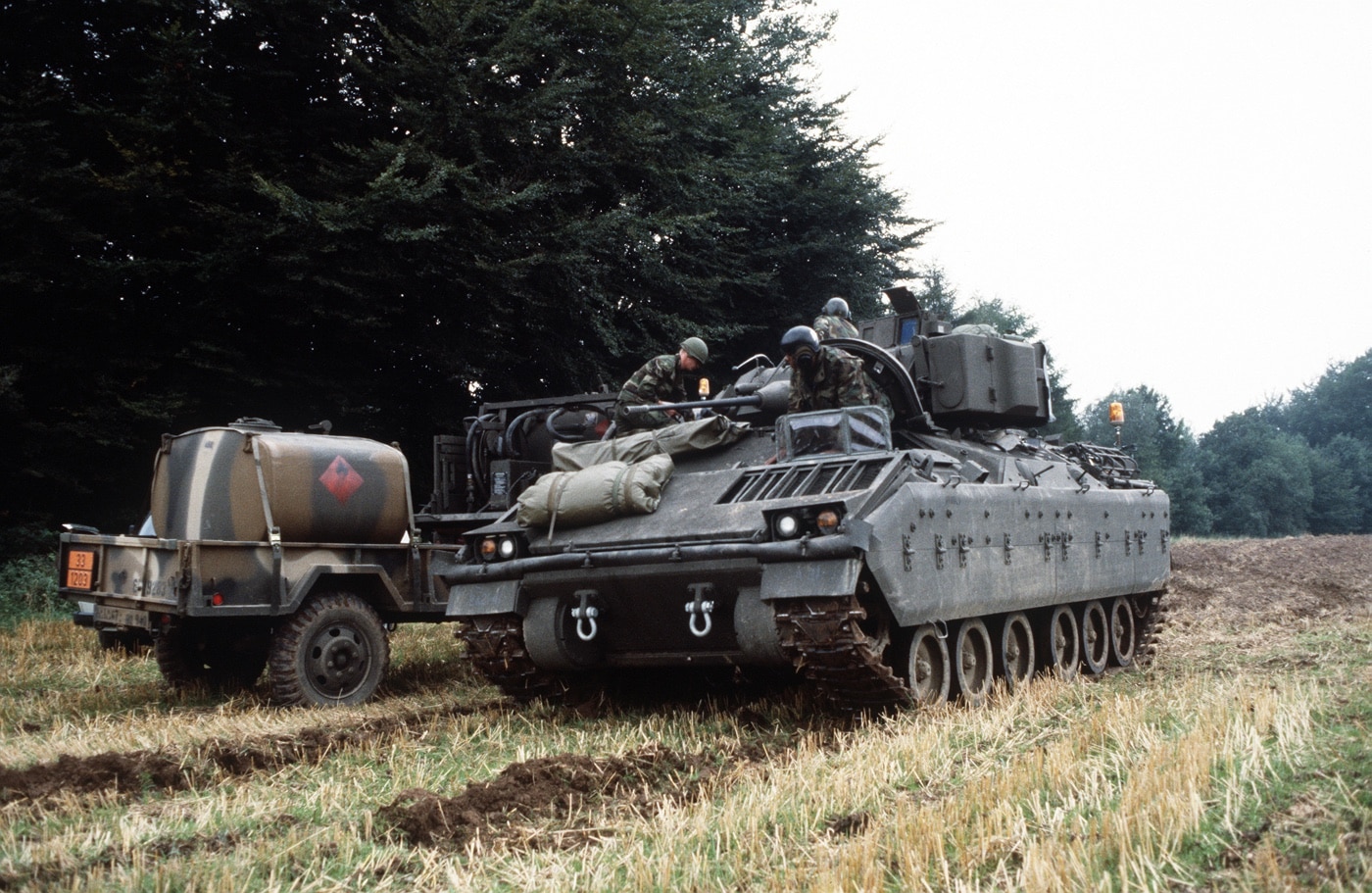
Unmanned aerial systems (UAS) including loiter munitions (kamikaze drones) have been a major threat to the M2 Bradley, just as IEDs were in Iraq going back two decades. In fairness, designers in the 1960s and 1970s likely couldn’t have foreseen these threats, which is also true of today’s main battle tanks.
Finding a Replacement
Despite the fact that the M2 Bradley was the result of numerous compromises and has shown to have significant disadvantages on a modern battlefield, the U.S. Army has failed to find a suitable replacement. To date, the Pentagon has made at least six attempts to develop a successor, and that has included the Future Combat System, the Ground Combat Vehicle, and the Optionally Manned Fighting Vehicle (OMFV), which evolved into the Next Generation Combat Vehicle (NGCV), now known as the XM30.
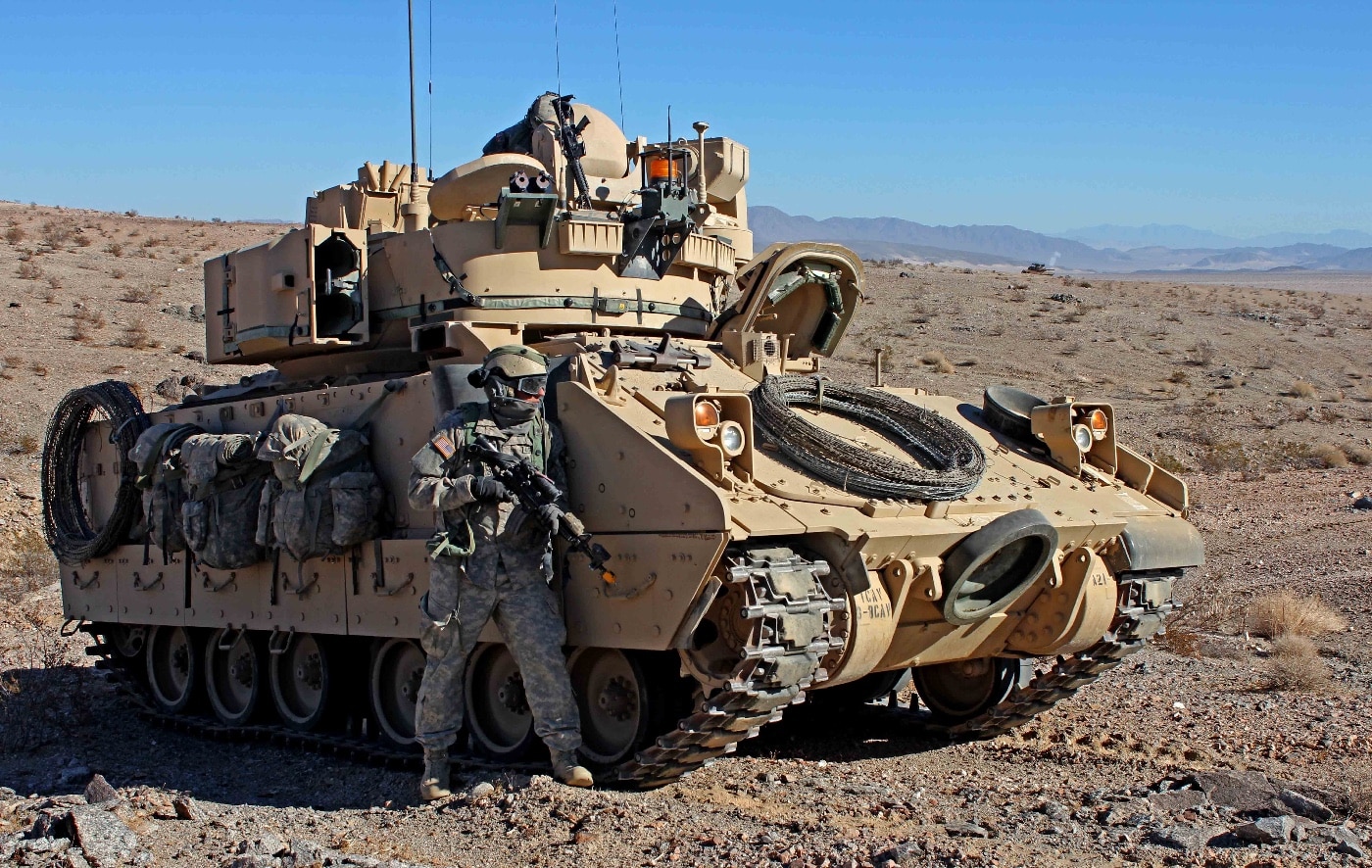
The XM30, which was launched after the GCV effort ran its course, continues. But its progress has been hampered by unrealistic deadlines and some overly ambitious objectives, including that two should fit in a single C-17 transport aircraft. For now, the U.S. Army will forge ahead in developing the Bradley’s successor, but perhaps part of the problem is that replacing a flawed platform may be harder than replacing a successful one.
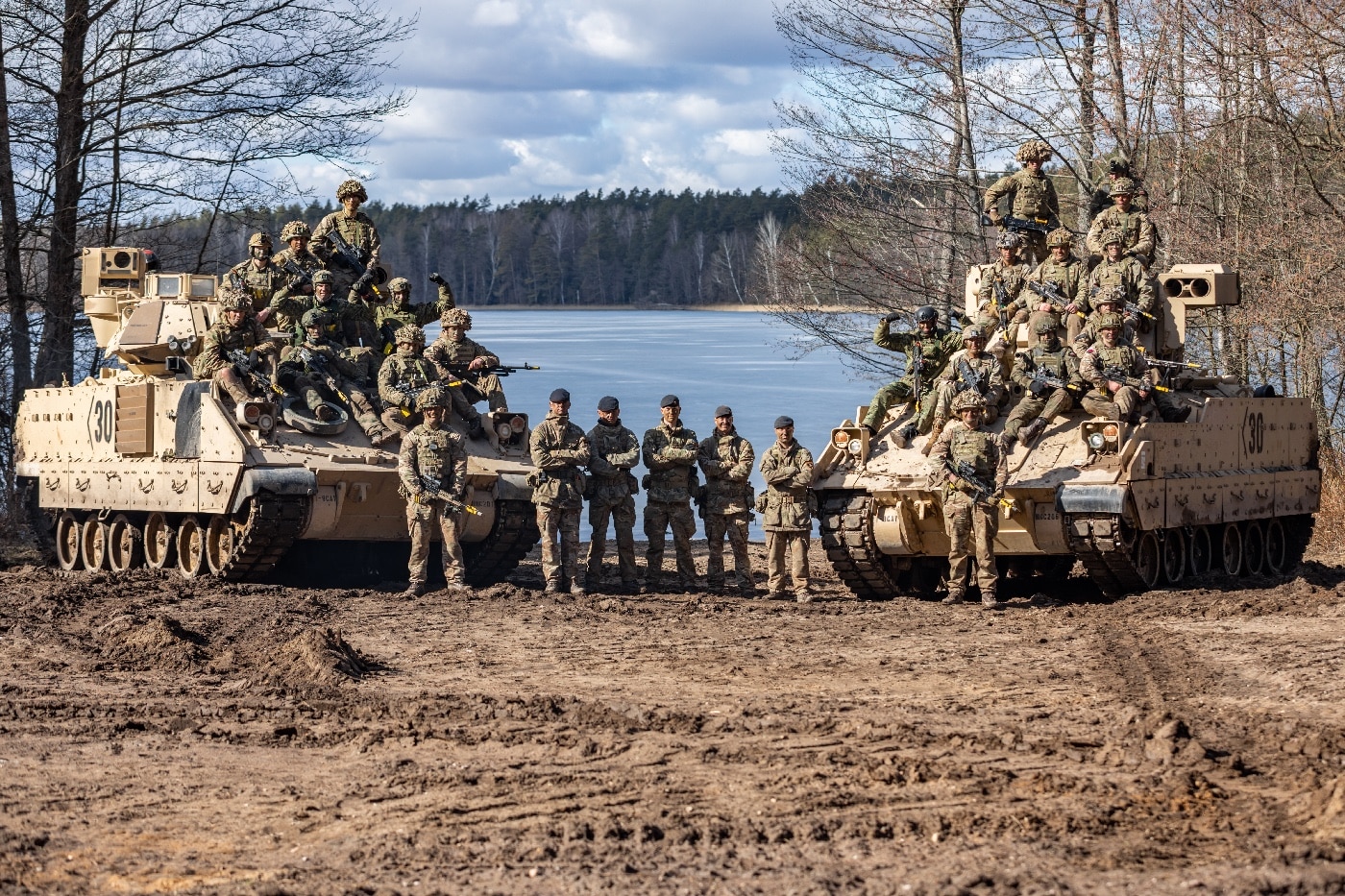
As a stopgap, the Army has adopted the Armored Multi-Purpose Vehicle (AMPV), a platform developed by BAE Systems to finally replace the M113 APC. Designed to operate alongside the M1 Abrams MBT and the M2 Bradley, it leverages aspects of the IFV, serving as a turretless model that could be produced in five variants, including a general-purpose troop transport, medical evacuation/medical treatment vehicles, mortar carrier, and mission command platform. It went into full-rate production in February for the U.S. Army, and there has been speculation that Kyiv would also seek to acquire an undisclosed number for use in its ongoing conflict.
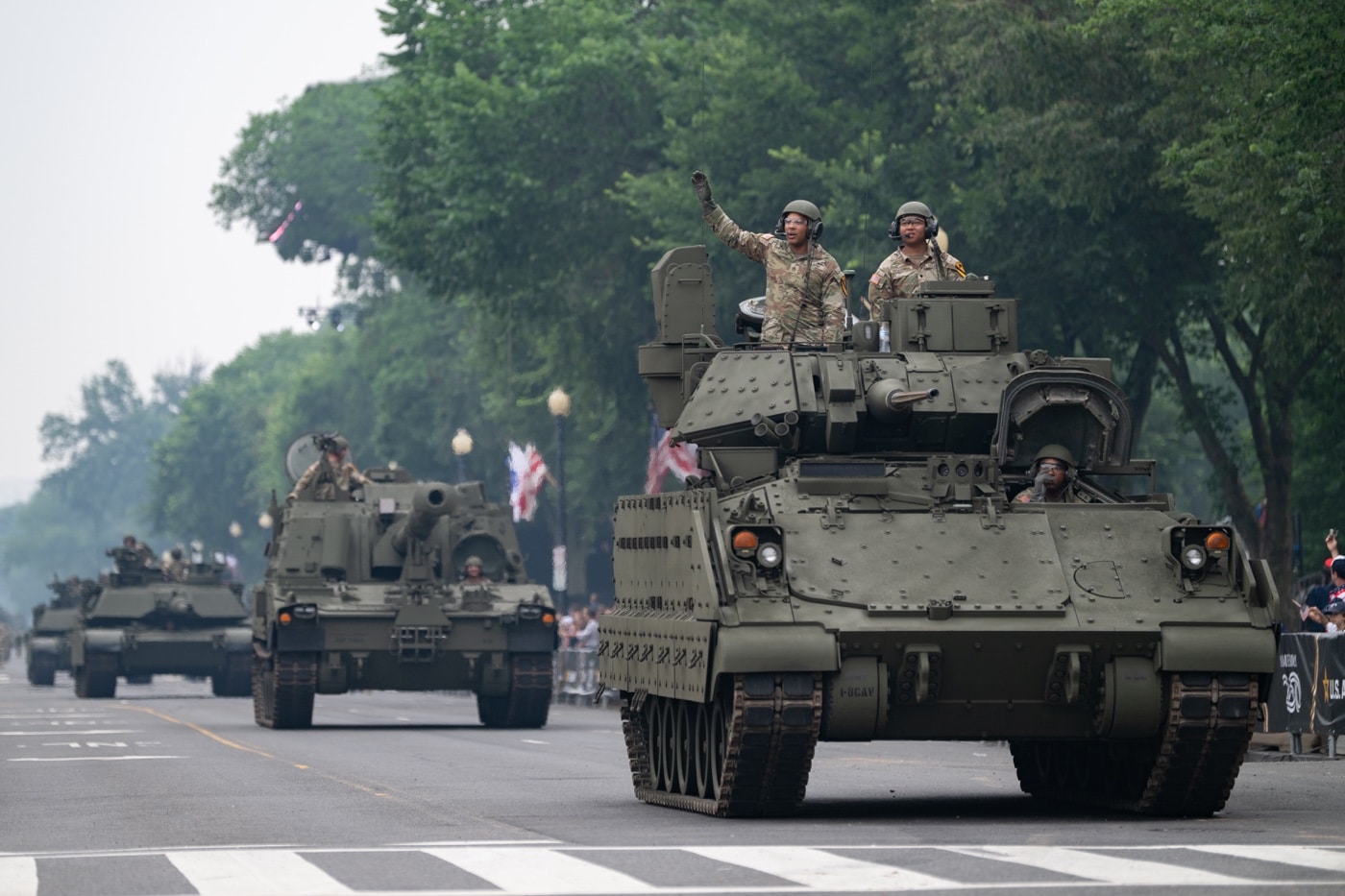
Finally, in May, the U.S. Army likely avoided The Pentagon Wars: Part II, after it canceled the M10 Booker program, which had entered production last year. Like the M2 Bradley IFV, the M10 was touted to be an “armored combat vehicle” designed specifically to support infantry brigades. Technically not a “light tank,” its turret and 105mm low-recoil gun certainly presented the profile of a tank. At least in this case, it wasn’t named for a general!
Editor’s Note: Please be sure to check out The Armory Life Forum, where you can comment about our daily articles, as well as just talk guns and gear. Click the “Go To Forum Thread” link below to jump in and discuss this article and much more!
Join the Discussion
Read the full article here





